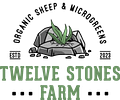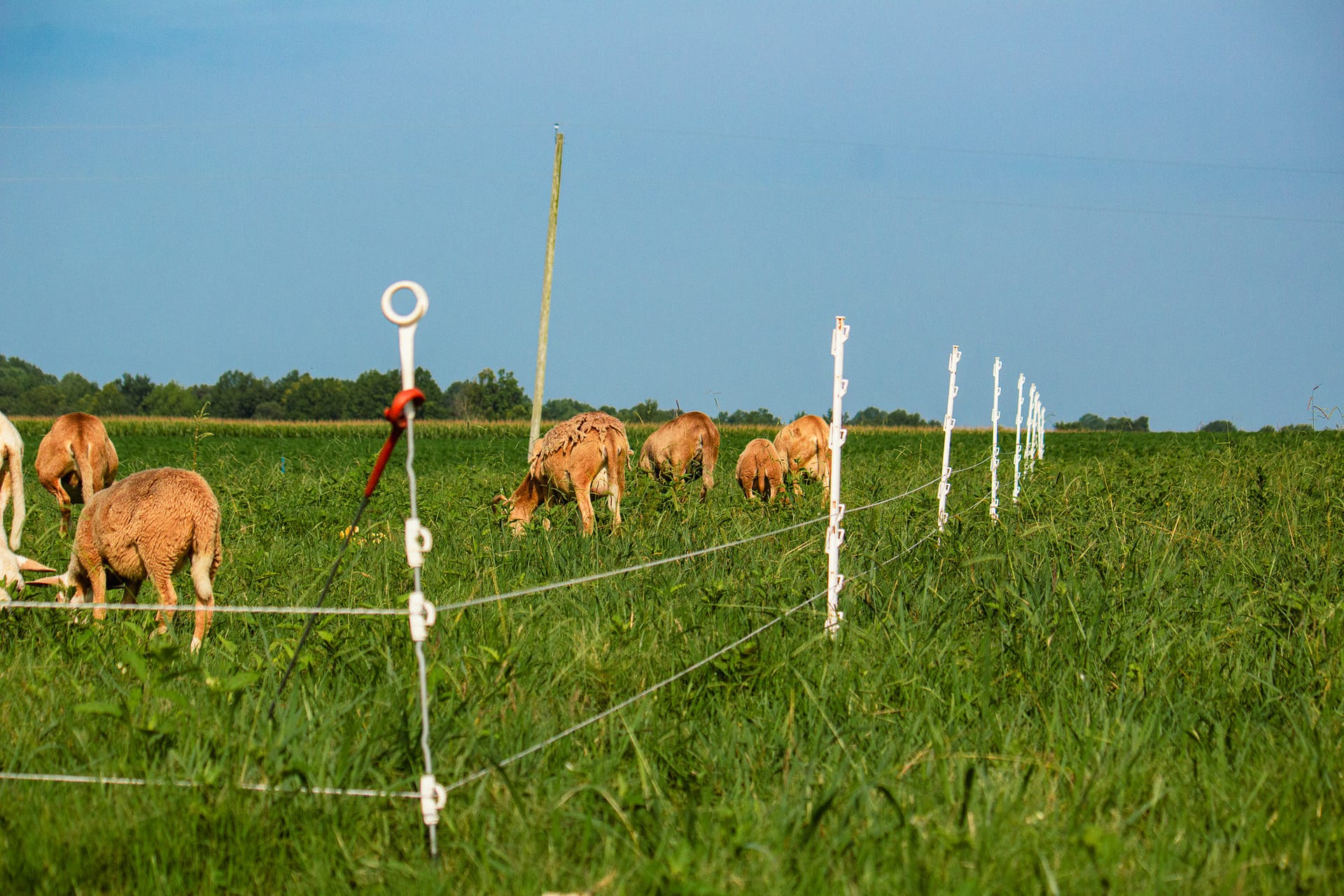Howdy!
I don’t know about you all, but these last few days have been a breath of fresh air! Before we get into how to utilize intensive rotational grazing, let’s first discuss what it is in a simple and easy way to understand.
I have laid out a glossary of the terms we will use in this article that you may not be familiar with to help you follow along.
Glossary
- Camping – a spot where livestock regularly bed down to ruminate and/or sleep, usually longer than one day when contained. Ruminants will generally pick the highest point in the field.
- Grazier – one who grazes livestock.
- Haystack/stockpile – this is the residual forage left over from the growing season to graze over the winter period.
- Overgrazed – when livestock have been left in a paddock longer than the forage in the paddock could support. In continuous grazing, “overgrazed” means the dirt is showing. In proper rotational grazing, overgrazing is subjective and dependent upon the goal. Usually, this means you grazed more than you wanted. For example, you only wanted to graze a third of the tips off the grass and you grazed half of it off.
- Paddock – a fenced area to contain livestock, usually a subdivision of a larger fenced area.
- Recover – the point at which the grass in a paddock has regrown its pointed tip after being grazed.
- Recovery time/period – the time it takes for a paddock to recover. This will vary by time of year, rainfall, climate, and species of grass. Early spring could be 14-21 days, mid-late spring 30 days, and a dry summer 60-90 days.
- Rotational grazing – a method of livestock management where the livestock is rotated (or moved) between different paddocks or fields. This is to allow other paddocks or fields to regrow. We will describe intensive rotational grazing at a later point.
The Problem With Continuous Grazing
The most common (and insufficient) implementation of rotational grazing is a successional form of continuous grazing. This is where the livestock is let loose into the whole field/paddock until they (usually) graze it to the ground. Then, they are moved to a new field/paddock.
Though this is a slight improvement over continuous grazing, it is still a very poor implementation for numerous reasons (which are the same problems with continuous grazing).
The reason continuous grazing (and the rotational variant) is a poor practice is that
- Letting your animals loose into a field to scavenge for quality forage and having to supplement their feed with grain (or another high energy or protein supplement) because there is no forage is not management.
- You are not mitigating parasite or fly load.
- You are not facilitating plant or microbial growth. The plants are overstressed, so they are not performing. Overstressed and overgrazed plants are unable to supply microbes with the energy they need. Those microbes are responsible for giving the plant the nutrients it needs to grow.
- You are not prohibiting excessive camping (>1 week, in my opinion).
- Forage lacks the energy and nutritional value compared to efficient rotational grazing.
- Roots lack depth and thus resiliency to heat and droughts.
- You are promoting compaction and the growth of parasites and other disease-causing organisms.
The Alternative: Intensive Rotational Grazing
The solution to all those problems plus grain, reseeding, watering, fertilizing, vaccines, antibiotics, and dewormers is a proper implementation of intensive, high-density rotational grazing. The problem with this method is that it takes your time and presence. However, how much time will you save when you are not vaccinating, feeding grain, administering antibiotics, seeding and fertilizing your fields, and irrigating because the grass is not growing back after grazing it to the dirt? How much money will you save on all of these costly inputs?
So… What is it?
We have already described what rotational grazing is in the glossary, but what is intensive rotational grazing?

Intensive rotational grazing is a subset of rotational grazing. Instead of giving livestock free rein over the whole field/paddock, this system subdivides it with frequent paddock moves. These paddocks are just large enough to support the livestock in that paddock for however long the grazier determines while maintaining his goal, which is usually to build his haystack/stockpile and ensure that the land has adequate recovery time before he returns to graze that same spot of land.
This method capitalizes on capturing energy from the sun and the animals, managing the grass regrowth curve, and understanding the lifecycle of parasites. The growth curve and optimal height and quality are dependent upon the species, but grass is always best grazed above three inches (keeps mouth above the ground away from parasites) and before the “boot” stage (which is before the seed head appears) to maintain quality and rapid regrowth. The diagram below illustrates the rate at which a grass plant grows.

To keep it simple to understand, grass has the most nutritional value and energy in its “vegetative” state. This stage is before grass becomes stalky and produces seeds. Grass also regrows the fastest at this stage. Once grass goes to seed, the plant has completed its purpose and will stop growing and wither.

This is a simple illustration demonstrating the complete cycle of rotationally grazing. During spring and early summer, you’re recovery time is about 30 days (can be as little as 14-21 days). So generally your goal is to graze your whole farm by the time the grass recovers. When you’re in the spring flush, your objective is to graze whatever you can off the tips to keep it from getting away from you. Your recovery time changes with seasons and rainfall. We’ll talk in the future about how to identify when your grass has recovered and some tips on how to keep the spring flush “under control”.
If there is one thing that you take away from this article, you need to understand that we are grass farmers. And more than that, microbe farmers. Because the grass that feeds our livestock doesn’t grow without the microorganisms in the soil. We don’t have to understand all the nuances and the whys, but we need to understand how to work with the natural processes and not against them.
There is much more to go into but I think this is a good introduction.
Is it worth the effort?
This is up to you. How much does animal performance, health, and even quality of life mean to you? And honestly, it doesn’t take that much time once you have mastered the basics.
But that is the beauty of this system, you can adapt it to your needs. Work a 9-5 job during the week? Build your paddock and move your animals once a week on one of your days off. Though it may not be as efficient as moving every day or every 2-3 days, your animals and your land will be much better because of it.
Every farm in the world should be implementing this system. Optimized grazing takes a little planning, but it is not difficult. I plan to create more content to take you through every step of the way.
How much time does it take to move your animals?
It depends on where you are moving, the size of the paddock (which is affected by several factors: the density and quality of your forage, how large your flock/herd is, how long they will be there, and rainfall), your infrastructure (water and fencing), how many strands of wire you have to use, if you have to knock down some brush to keep your wires from grounding, and if you have a helping hand.
For the two of us, it takes about 20 minutes to move our small flock of 14 rams and about 45-90 minutes total to move two flocks of ~30 ewes with no infrastructure for a day’s worth of forage. That includes water, minerals, and feeding the dogs. We haul water using a 50-gallon food-grade barrel in the bed of our pickup (our four-wheeler and UTV are both currently out of commission) and have no interior paddock divisions (leased land).
If you plan out how you set up your farm’s fencing and watering system, you could greatly optimize the amount of time it takes to set up paddocks and move them.
As we have said, how long it takes depends on many factors—and one is how well-trained your animals are (ours come by whistling for them when moving paddocks). If you need two strands of wire with a herd or flock size equivalent to ours, our numbers will put you in the ballpark for how long it will take you. More strands will cost more time.
You can build a week’s worth (or more) of paddocks by setting everything up ahead of time which will only take you a few minutes to move them. With the continual advances in technology in this field, you can set up paddock moves that you don’t even have to be there with automatic gates. How amazing is that?! That will be another topic for another time, but they are sweet if you have the resources.
CONCLUSION
After learning everything I know, there is no other system I would use over solid rotational grazing. It is worth the effort. Holistic, natural, and manages your animals’ and pasture’s health and performance without inputs—other than perhaps some hay during the winter, but with proper management in a climate that doesn’t have excessively harsh winters, you don’t even need that.
With the right equipment and techniques (plus a good helping hand), it doesn’t take much effort or time to move your animals. Good infrastructure will make it even easier (check out our free e-book for some tips when you subscribe). Check out our first post for a few tips to make your paddock moves more efficient here!

